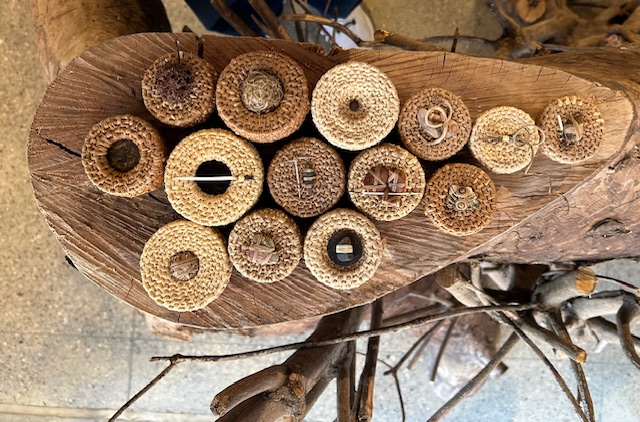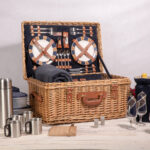In this month’s issue, John Eric Home spent time with artist and expert basket maker James Ebbert, known for his intricate and beautiful design work.
JEH: Let’s start at the beginning of your journey. What was the catalyst, that moment that made you pursue working in decorative arts (either personally or professionally or both)?
JE: That would be my high school art teacher, Mrs. Schwelm. She taught me so much in just three years and did so in such a fun way.
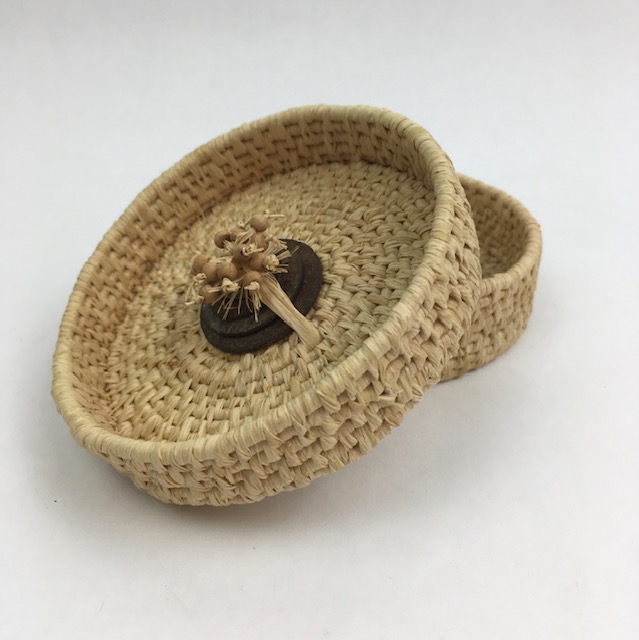
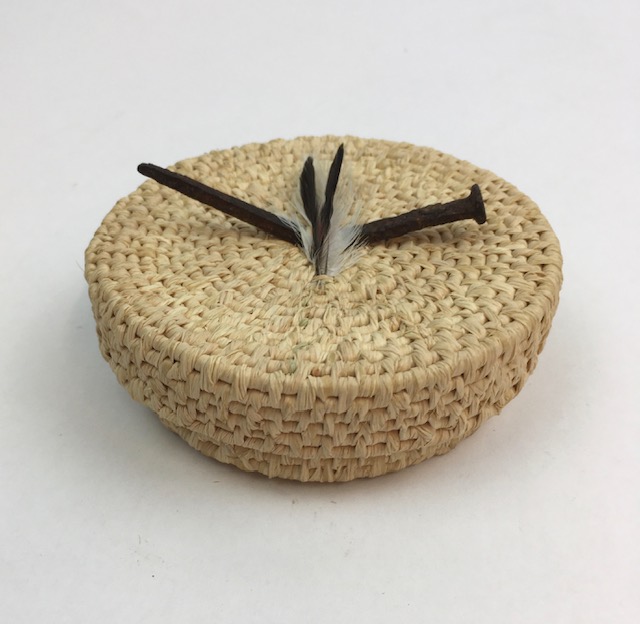
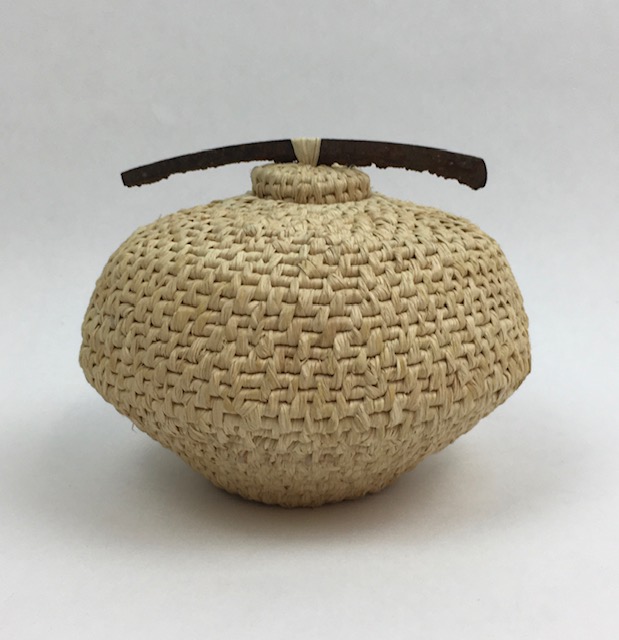
JEH: What inspires you to create overall?
JE: I can’t not create and have been like that for as long as I can remember. In art and other aspects. In my previous career, I owned a flower shop and worked as the main designer. That too is a creative field. Even though I was in a “creative” job, I still needed to create after hours.
JEH: What inspires you to weave a particular piece?
JE: I begin with a premise and then follow the path to where the materials lead me. Really, it’s more the process. I need to start, then once I do, I just go. Never do I take something apart. If I make a mistake or go in a wrong direction, I continue and weave the mistake into something intentional.
JEH: Can you speak on the different mediums that you incorporate in your works?
JE: I almost exclusively use raffia. I like to dye the raffia with iron, coffee or tea, and have been experimenting with some other natural dyes, but I’m not a man of many colors. I was asked to participate in a recycling show and recently wove plastic shopping bags into a desk set. But I prefer raffia.
Throughout my career, I have changed mediums, but I have always needed an outlet for my hands and mind. Artwork is very relaxing and meditative for me. Typically, I can’t stay still. I’m often caught pacing. It’s best if I can keep my hands active and weaving keeps me busy in a meditative way.
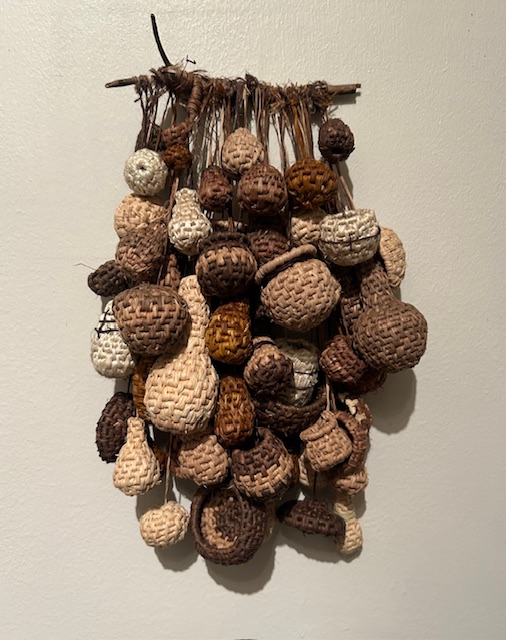
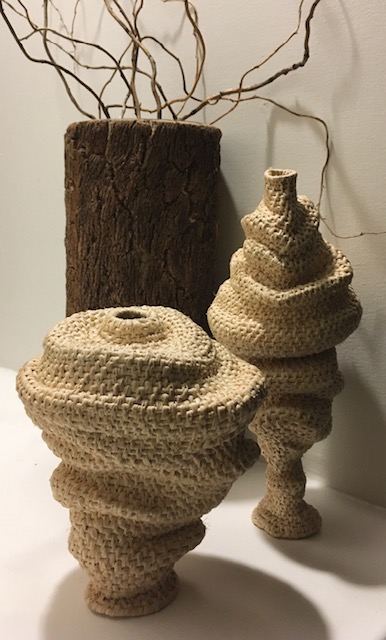
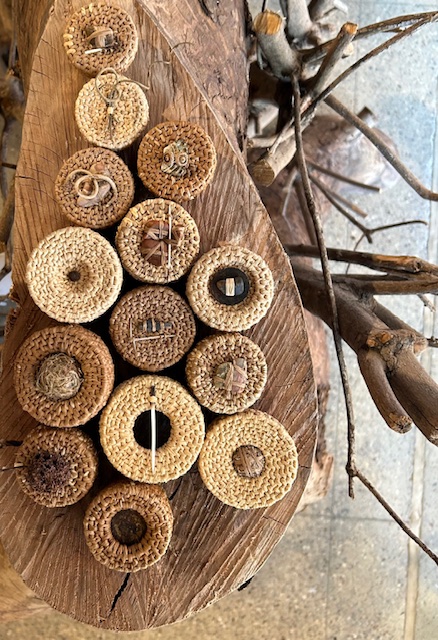
JEH: Let’s turn to the sourcing of your materials. How do you source and what makes something special to you?
JE: Discarded industrial elements, detritus from the Pittsburgh streets and random ephemera from friends. During the covid lockdown, I was weaving a lot – the rusty and discarded elements started then. I would take daily walks and pick up metal things from the street to decorate the baskets with.
JEH: The mixed materials that you use – are they used out of a vision or is it more practical?
JE: I pick things up because they look interesting to me, the coloring and texture work well with the raffia and the shapes that I make. They give the basket the right look. That’s my aesthetic.
JEH: Can you describe for our readers how you prepare to weave?
JE: Actually, there is nothing in particular. My raffia and needle are usually next to me. It’s rare that I watch anything on TV or listen to music without weaving. It’s an incredibly long process. A large basket can take weeks, which is why most of the things I make are small and intricate.
JEH: Are there styles that have and/or continue to impact your work?
My weavings adhere to general design principles rather than one particular style or period. Although, Native American basketry has always been my favorite, even as a child. Most of the shapes are typical basket shapes, some of the recent work I’ve been experimenting with are very uneven and untraditional shapes. I recently made several resembling tornadoes or cyclones.
JEH: Can you speak on the sustainable aspects of your work?
JE: Because I use natural materials, their lifetime is finite but long. On larger baskets, I will sometimes use hemp or jute twine, wrapping it with raffia. It gives some width to the weave. Maybe someday I’ll find another fiber that I’m comfortable with, but nothing is right now on the radar.

